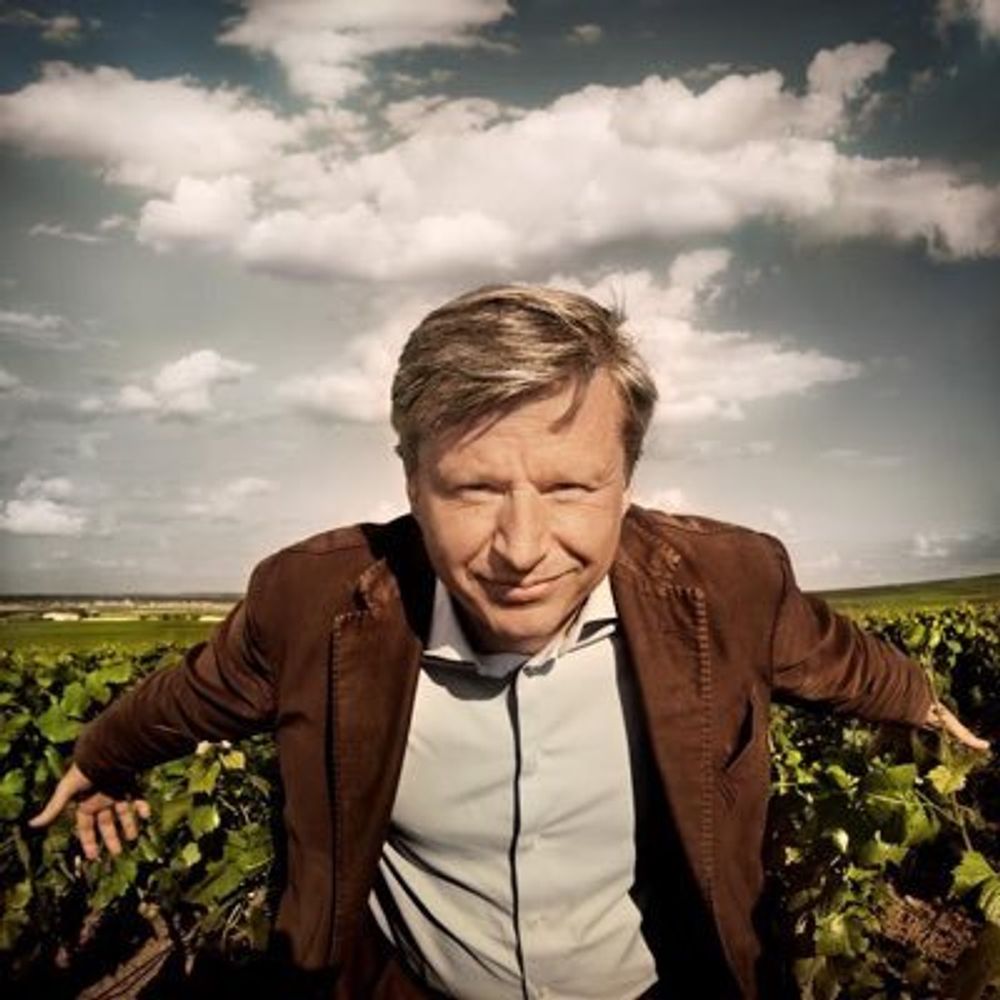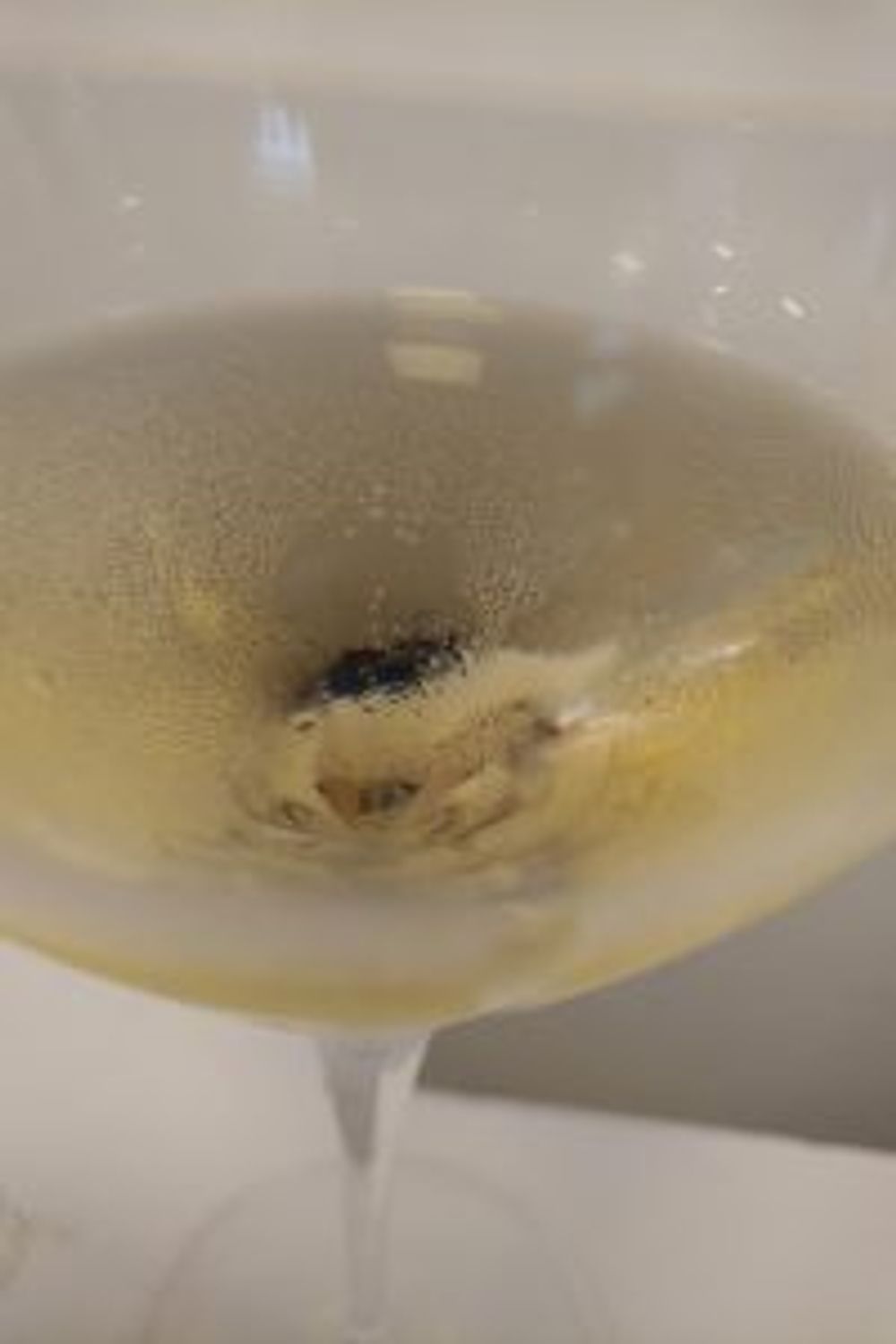Very little yeast is used in the making of Cristal, allowing it to age very slowly without giving off too much autolysis. Cristal 2008 is a study in ‘purity, saltiness and trust’.
Cristal 2008 flowed freely during its launch in London on Monday: guests’ glasses were topped up with the most striking golden liquid from the iconic clear bottles with their golden labels. The venue was an arty, bare pop-up space in Marylebone, the presentation set the accent on celebration rather than technical explanations.
Frédéric Rouzaud, CEO of Champagne Roederer spoke briefly, barely delving into the history of what probably is the prestige cuvée of all prestige cuvées, referring to it as a “fantastic jewel of Champagne.” He acknowledged the wisdom of his forebears in acquiring vineyards, now amounting to 240ha in which, so Rouzaud, chef de cave Jean Baptiste Lécaillon “is playing with great mental energy.”

Jean Baptiste Lécaillon: “Playing with great mental energy”
He lost no further time in giving the word to Lécaillon himself, noting: “He is not only a great winemaker, he is a philosopher: he tries to understand life as much as he tries to understand Champagne.”
Lécaillon himself was also brief but clearly touched: “The most important thing is the vision of Cristal. At Roederer, the family, my team and I share this vision of the ultimate finesse, the crystal clear vision.”
He emphasised that Cristal 2008 was entirely made from estate fruit farmed [mostly] biodynamically “in the pursuit of something so precise, so pristine. A bright line of structuring acidity is the key to Cristal running through its satiny texture,” he said. “You only get this with 25+ year-old vines grown in chalk, this saltiness, this chalkiness.”
He explained that the average age of the vines was 42 years: the youngest being 25 years old, the oldest 64. “More than that, Cristal is about time in the bottle.” He drew an arc between vine age and Cristal 2008’s ageing on lees and termed it “half a century of work, half a century of a journey. I am the proud father of Cristal today. I think it’s my best, honestly.”
So what does it taste like?

Louis Roederer Cristal 2008: Precision and poise, laser linearity and a taut but sinuous, restrained body. There was barely any autolysis, so brisk, so pure were the flavours. For now this is tight and slender with pristine notes of lemon and a bracing, invigorating lift of freshness. A gentle but generous inner richness is hinted at but this is bound to be revealed in the slowest possible fashion: it was almost a crime to drink it now as the trajectory of this pristine, almost austere beauty is brilliant. It will bring deep joy for many, many years to come.
Lécaillon later commented: “I hate autolysis. I am a winemaker, not a yeast maker. I start with a very strong, clear identity of wine, with this acidity and I use very little yeast [for the second fermentation] so that it ages slowly and gives little autolysis. This way I get the autolytic texture but I don’t get the aroma and get closer to saltiness than to yeastiness. Acid gives more pixels, I call it high definition. This bright line of acidity is important – as long as it’s integrated into the texture.”

But Lécaillon then brushed his telling ideas away and said: “There are wines that go from your mouth straight to your heart. You don’t need the brain and you relax. Your body knows. We have to learn to trust our bodies, just like when we make wine we have to trust the soil.”
Cristal 2008 is a blend of 60% Pinot Noir and 40% Chardonnay that spends nine years on lees. The dosage is 7.75g/l. In the UK it is available from Maisons Marques et Domaines









































